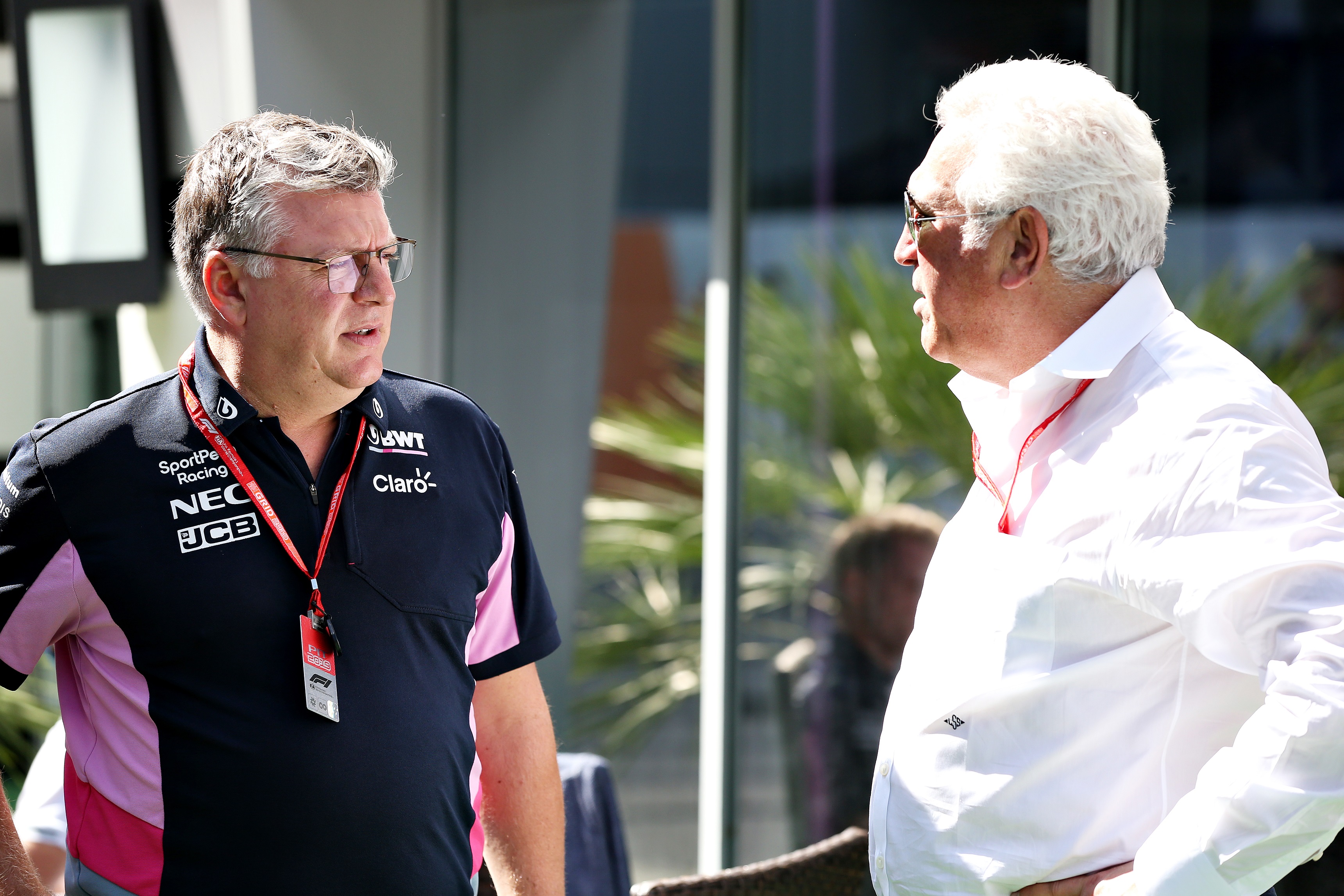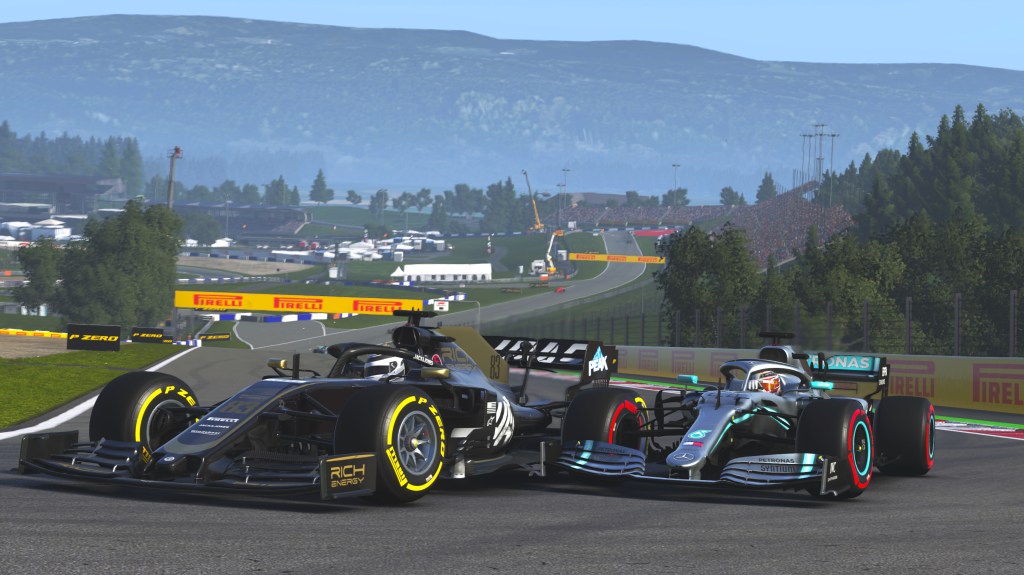Any longtime F1 fan who claims that they just want to see good racing, without all the team politics and soap opera aspects that so often dominate F1 coverage, is lying and being sanctimonious about it. It’s true that a major driver of F1’s growing popularity, the Drive to Survive series on Netflix, is notorious for playing-up or inventing scenarios in the same way that “reality TV” does. But there have also been entire years where F1’s stratified grid was scrupulously free of good racing, and the only thing that was interesting about it was clash of egos and talent, all armed with unimaginable riches. And still I am hard pressed to recall anything as absurd and daring as what just happened in F1, which has been thrown into chaos by a series of almost unprecedented power moves by drivers and agents. Nor can I imagine being the kind of F1 fan who would try and claim they are not entertained by this.
A week ago, just before the Hungarian Grand Prix, Aston Martin driver Sebastian Vettel announced he will retire at the end of the year. Vettel’s fortunes flagged after winning four championships with Red Bull, and after a frequently disappointing stint with Ferrari he has found himself with a mediocre car on a team that is being transformed by its billionaire owner Lawrence Stroll. Stroll got into F1 to support his son Lance’s racing career, and has gone from a character in the background of Lance’s story to being the face and guiding will behind Aston Martin pouring tons of investment into the team and hiring a raft of new personnel.
Videos by VICE
Every F1 team has just two cars and three driver contracts to give out, though most also have a development program that brings young drivers up through the upper ranks of racing and gets the best prospects ready for F1. So Vettel’s departure meant that a coveted race seat would be open at the end of this year. While Aston Martin have been mediocre at best this year, they are still a mid-field team with money to burn, making them a desirable location for just about anyone who hasn’t been lucky enough to end up with Ferrari, Red Bull, or Mercedes.
Enter Fernando Alonso, a driver of enormous talent, fame, and ego who, with only two championships to his name, has spent his career on the outside looking in at successful F1 dynasties. If you are more skeptical of the man, you could also say his run of bad luck seems improbable and that he might have a causal relationship to the fact that he has often arrived at teams just as they enter a period of steep decline. After winning championships with Renault (now racing under the name of Alpine), Alonso went to McLaren just in time to be blindsided by an upstart rookie named Lewis Hamilton, then to Ferrari just as the team settled in for years of ass-kickings by Red Bull, and then to McLaren for an era where the car was so bad that it would have struggled even in a lower-tier racing series. He retired after a series of grim campaigns and became a roaming mercenary trying to win the world’s biggest races. He won the 24 Hours of Le Mans with Toyota’s Death Star-like program, which was so successful it effectively chased all its competition out of the sport and forced a major rules overhaul. He also stuck around McLaren long enough to take part in a farcical attempt to compete in the Indy 500. He returned to F1 after just two years of retirement in 2021 to join Alpine, which was presented as a kind of homecoming, although the Renault team of his youth was a thing of the past and has been there for two years, at a team that is not terrible but also seems unable to close the distance between itself and the frontrunners.
On Monday, while Alpine were still anticipating renewing Alonso’s contract, Aston Martin blindsided them with the announcement that Alonso would be driving for them next year. It was unexpected in part because it is such a lateral move: neither team has really covered itself in glory the last couple years, but arguably Alpine have shown much more progress toward serious contention than Aston Martin. Still, Alonso told reporters at Hungary, just before the Aston Martin deal was revealed, that if you are not with one of the top teams you have to look for the most exciting and promising longshots. Clearly, he saw Aston Martin as a more dynamic prospect than Alpine.
This decision was a stunner and an awkwardly-timed one: Alpine have one of the best future F1 prospects as their reserve driver, a driver named Oscar Piastri who won the Formula 2 championships in his rookie year. As a driver who came up through their development system, Alpine have been looking for ways to keep him tied to the team while expecting that they would be running Alonso and his teammate Esteban Ocon for the foreseeable future. One idea apparently being floated was to send him to a weaker team, namely the perpetually struggling Williams program, to gain some F1 experience before bringing him to the flagship. This was effectively the same playbook Mercedes used with George Russell, who has now become a great teammate alongside Hamilton and seems poised to lead the team whenever Hamilton calls time on his own era.
There were rumors, however, that Piastri had already struck a deal with the McLaren team, as he and his agent (former Red Bull driver Mark Webber) were reluctant to send him to be buried at the back of the grid with Williams. However, Alpine were also adamant that under his contract with them, they could exercise the option to put him in as an Alpine driver. It seemed like this tension might have been resolved this morning, when Alpine’s Twitter account posted an official announcement that Piastri would be driving for the team in 2023.
Just hours later, however, Piastri posted his own statement denying Alpine’s and promising that he would not be an Alpine driver in 2023. Which means that at the moment, Alpine may have lost two elite drivers in the space of a day, yet may also not be able to find a replacement for Alonso because the Piastri situation is now a contract dispute where Alpine could try and compel him to come drive for the team.
There is another angle to this whole saga as well: the current head of Alpine’s racing team is Otmar Szafnauer, an American engineer who has spent his career in F1 and who largely build the Aston Martin from a shoestring operation to being one of the most efficient and overperforming outfits in F1 during the team’s previous incarnations as Force India and Racing Point. However, when Lawrence Stroll acquired the team, Stroll quickly began hiring key staff without Szafnauer’s input. Szafnauer proceeded to ghost Aston Martin: it was an open secret for months in F1 that he had likely signed a deal with Alpine, but he refused to state clearly that he was leaving Aston Martin until the last possible moment. While it might be going too far to say that Stroll embarked on this course to screw with Szafnauer’s successful-so-far stint with Alpine, it also seems hard to believe some of this chaos was not anticipated and welcomed.

More seriously for the business of racing, this is the second time in a month that a driver has appeared to tear up an agreement right as a team tries to force their hand with a splashy public announcement. Over in North America’s Indycar series, the Chip Ganassi team announced that they had renewed their contract defending champion Alex Palou, only for Palou to post hours later that Ganassi had fabricated quotes from him and that he had not signed a new contract with the team and would be racing elsewhere next year. Shortly after that… the McLaren F1 team’s Twitter account welcomed Palou to the McLaren family as part of their Indycar operation. By all accounts Palou did have a contract with Ganassi, though one that fell below his current market value as a champion, and the team had tried to give him a better contract to keep him on and keep him happy. But what they could not give him, but which McLaren supposedly can, is a path to F1.
That dispute has become a legal one. While observers generally agree that once an athlete announces that they will refuse to compete for their team, the only question becomes how the end of that relationship is negotiated; so far there is little evidence that either side wants to back down from this. That saga was fresh in many fans’ minds when Alpine announced their “deal” with Piastri, who like Palou has apparently been courted by McLaren, but it was still shocking to see what has generally been a rare worst-case scenario in driver and team negotiations repeat itself in so short a time.
It also points to a shift in power dynamics in motorsport: historically it is the proven stars who can command the best deals and greatest concessions, but the enormous success being enjoyed by precocious talents like Max Verstappen, Lando Norris, Alex Palou, Charles Leclerc, and others has made the top rookie prospect more valuable than the established champion.

If predicted future performance is always more valuable than past achievements, and this has been the direction of most sports contracts, then drivers are never more valuable than in these early stages of their career, when they hold the promise of growing in ability and expertise while shaping and being shaped by the team around them. Where the driver used to be the final piece of equipment installed in a car, they are now as foundational an element as the factory and HQ. Palou and Piastri are, in the most spectacular fashion possible, trying to force racing teams to accept that young drivers should and will take opportunities, cash, and most importantly control upfront.




